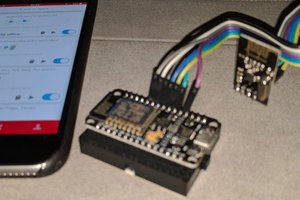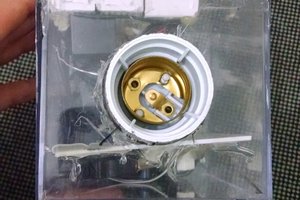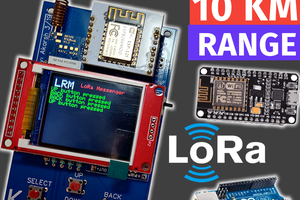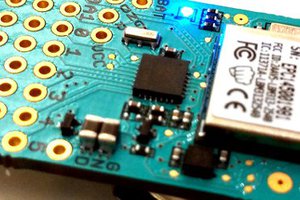Design
There were some constraints and requirements to the design.
- I have no access to or ability to change any of the existing hardware relating to the gate operation. The only part of that system I can touch is the remote control that I own.
- I wanted to be able to easily make changes to the solution if I'm unhappy with it.
- The system should be operable with a smart phone.
There are hardware and software components to this solution.
Hardware
The esp8266 is a wifi enabled controller that can easily be programmed via the Arduino IDE. I picked up a NodeMCU board a while back and this fit the bill as the means to interact with the actual garage remote control.
I also had a couple of cheap relays in my parts box which would do for simulating a press of the physical buttons on my existing garage remote. With the relays connected to the button pads of the remote control, activating a relay for a period of time is the same as pressing the button.
Having decided on an esp8266 and a couple of relays to form the garage controller, I needed a way to trigger the system.
Software
As a surrogate remote control, a smart phone is ideal since nearly everyone has one and there are numerous apps around that might be suitable without even having to write any Android software. MQTT was an obvious mechanism to send messages from an external system to the garage controller. CloudMQTT is a solution to this, offering an internet-accessible MQTT broker.
I needed a way to send a MQTT message to the CloudMQTT broker from the smart phone. I didn't find any cloud services offering a HTTP->MQTT gateway so I wrote a simple solution with python + Flask and deployed it to AWS Lambda using Zappa.
The last piece is a mechanism to make a request to the HTTPS endpoint of the Lambda function. I looked at IFTTT's Do button at first as a means to trigger the system. I found that it was taking at least 8 seconds for a relay to be activated, which was much too slow for my liking. A quick search turned up an Android app called HTTP Request Shortcuts. This resulted in very fast triggering of the pipeline (< 1s from "button press" to relay activation). This is probably good enough if you want to do something similar, but I ended up writing an Android app specific to this task (see screenshot).
The system flow is described in the diagram shown in one of the images.
The code
There are 2 components: a python/Flask app running as an AWS Lambda and the Arduino sketch running on the esp8266.
The python app is responsible for receiving a web request and publishing to the correct topic on the MQTT broker. There's no authentication of requests at the moment. I intend to add basic auth support, and either ship the creds with the python code or persist them externally (perhaps DynamoDB). Later I may add more features to make it easy to give visitors single day access. This component is very simple to update to suit my needs.
The esp8266 code subscribes to garage/# on the broker and activates the entry and exit gate relays depending on the received topic for each incoming message. I based this off the MQTT examples included with PubSubClient. This library is not included by default in the Arduino IDE. You can install it by going to Sketch -> Include Library -> Manage Libraries and searching for PubSubClient.
 Alexander Else
Alexander Else


 djsb
djsb
 Samuel Franco
Samuel Franco

 Eric Cantrell
Eric Cantrell
I use Adafruit.io MQTT broker. It's very easy to set up a free HMI to monitor, control and record data from anywhere. https://sites.google.com/site/nodemcu12e/home#h.bagvjtiwx7l3